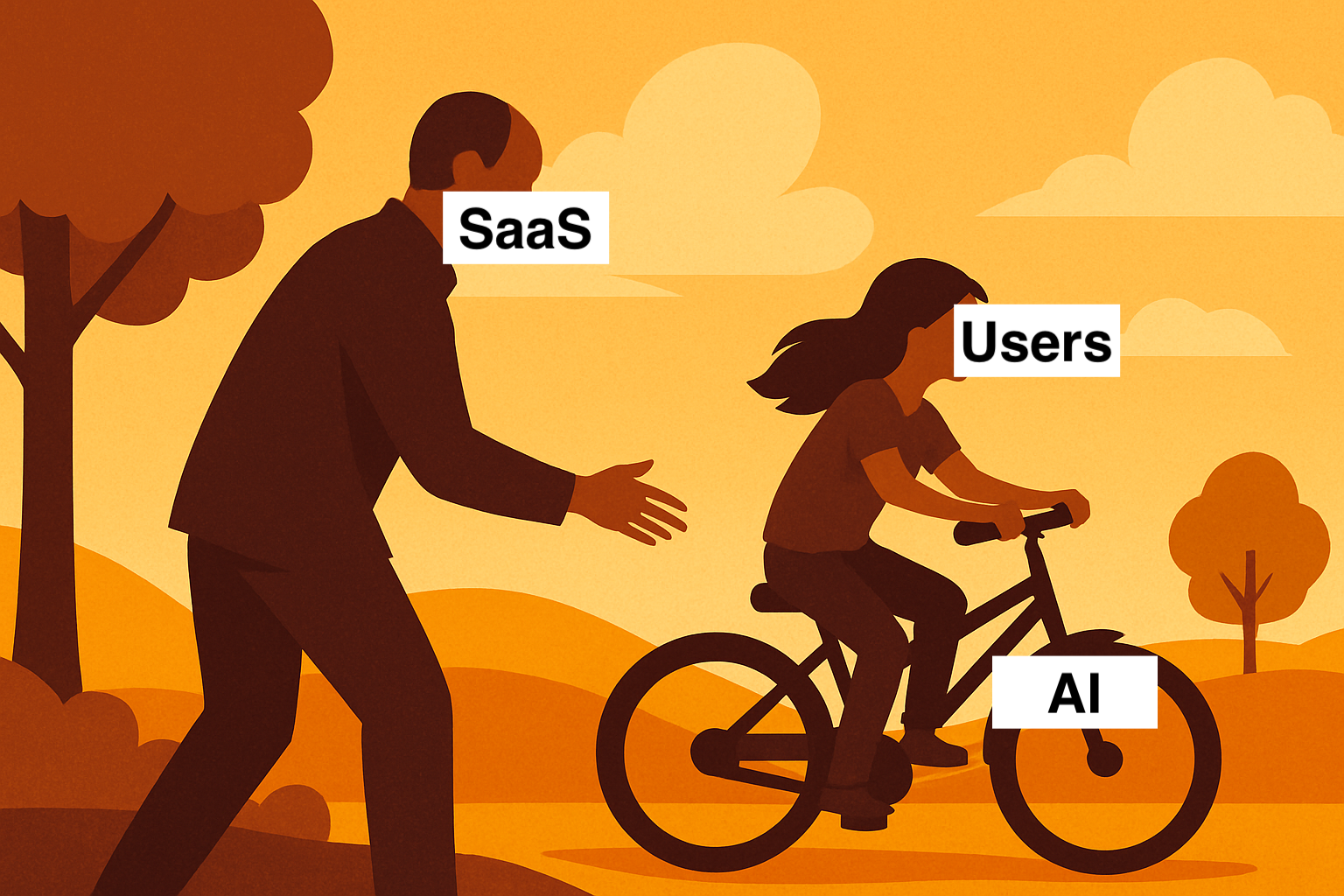The Old Way: Control Everything, Serve Everyone (Badly)
For decades, software companies built massive, all-in-one tools trying to cover every edge case for every user. It made sense at the time because custom code and integrations were slow and expensive.
The result?
- Bloated products no one fully loves
- Confusing experiences that frustrate new users
- Power users whose real needs still aren’t met
- Engineers stuck maintaining workarounds instead of solving meaningful problems
This model has always been just good enough to keep people paying, but still bad. People stay not because they love the product, but because switching is worse.
It’s 2025: Custom Code Is Cheap, Control Doesn’t Scale
Generative AI changed everything. High-quality custom code is now fast, affordable, and accessible to almost everyone.
Trying to control every edge case for every user doesn’t hold up anymore. Inversion of Control, once just an engineering pattern, has quietly become the smarter business strategy.
What Is Inversion of Control?
In software, Inversion of Control means shifting power outward. Instead of dictating every possible outcome, you build a flexible system that lets people plug in what they need.
It is the difference between an overprotective daycare and an open playground. A daycare tries to manage every detail for everyone. A playground sets clear guardrails but trusts people to play, adapt, and grow.
A Simple Code Example
The “control everything” approach looks like this:
displayUsername(user)
Then come the requests:
displayUsername(user, firstNameOnly)
displayUsername(user, firstNameOnly, lastNameCommaFirstName)
You bolt on if-statements until the function is a mess. More control, more chaos.
IoC flips this:
displayUsername(user, nameFormatFn)
The core stays simple. The user provides their own logic. They get what they want, and your product stays clean.
The Same Pattern at the Product Level
This is what happens to entire products.
You launch something focused and useful. People love it. New users come in and ask for tweaks. You bolt them on, one by one.
Before long:
- Your clear product is bloated
- New users are overwhelmed
- Power users still feel blocked because you can never cover every special case
Trying to keep control creates complexity that makes everyone unhappy.
The Trap: Good Enough, Still Bad
All-in-one software survives because it is good enough to keep people paying. But it never really works well for anyone.
That may still work for a few years. But the moment there is a platform that stays simple at its core and truly lets users shape it for themselves, your customers will slowly drift away.
They will not jump all at once. They will leak away over time.
Why Inversion of Control Wins Now
When code is cheap and people expect flexibility, you do not win by covering every edge case. You win by giving your users a stable foundation and a clear path to extend it.
- You stop being the bottleneck
- Your product stays lean and maintainable
- Users feel ownership because they make it fit them
- You grow with your customers instead of fighting to keep up
Giving up control is how you keep control.
This Is Bigger Than Just IoC
This is the deeper reason why the old SaaS playbook is wearing thin. When users can shape exactly what they need, bloated “one-size-fits-none” software will lose.
If you want to dig into this more, read my piece: Long Live SaaS, SaaS Is Dead. It unpacks why “good enough” will not be safe much longer, and what comes next for products that want to stay relevant.
Build Playgrounds, Not Daycares
When custom code is cheap, control is an illusion. Customers do not want you to smother every corner case for them. They want tools and guardrails so they can solve it themselves.
Stop helicopter-parenting your users. Trust them to grow.
Inversion of Control: the old engineering pattern that just became your biggest business advantage.
